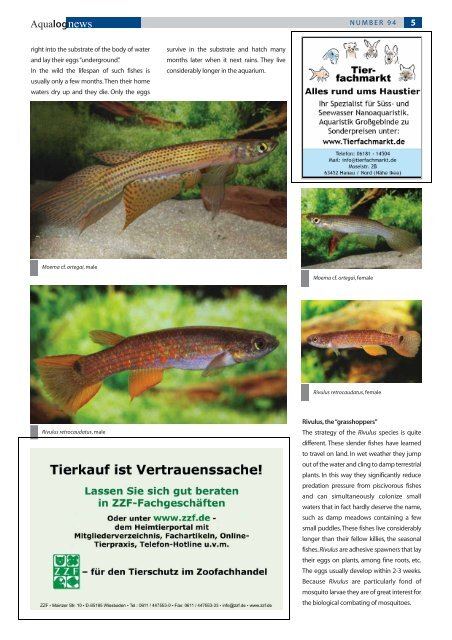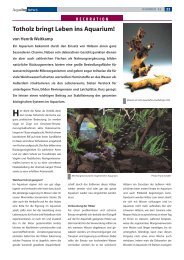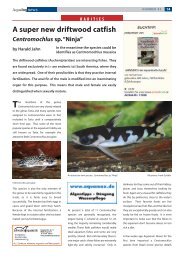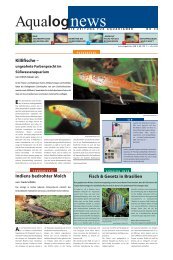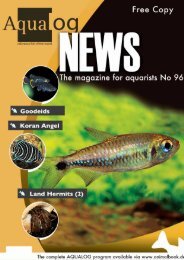LIVEBEARERS T Phallichthys tico - - a dainty new ... - Aqualog
LIVEBEARERS T Phallichthys tico - - a dainty new ... - Aqualog
LIVEBEARERS T Phallichthys tico - - a dainty new ... - Aqualog
Create successful ePaper yourself
Turn your PDF publications into a flip-book with our unique Google optimized e-Paper software.
<strong>Aqualog</strong><strong>new</strong>s NUMBER 94 5<br />
right into the substrate of the body of water<br />
and lay their eggs “underground”.<br />
In the wild the lifespan of such fishes is<br />
usually only a few months. Then their home<br />
waters dry up and they die. Only the eggs<br />
Moema cf.ortegai,male<br />
Rivulus retrocaudatus,male<br />
survive in the substrate and hatch many<br />
months later when it next rains. They live<br />
considerably longer in the aquarium.<br />
Moema cf.ortegai,female<br />
Rivulus retrocaudatus,female<br />
Rivulus, the “grasshoppers”<br />
The strategy of the Rivulus species is quite<br />
different. These slender fishes have learned<br />
to travel on land. In wet weather they jump<br />
out of the water and cling to damp terrestrial<br />
plants. In this way they significantly reduce<br />
predation pressure from piscivorous fishes<br />
and can simultaneously colonize small<br />
waters that in fact hardly deserve the name,<br />
such as damp meadows containing a few<br />
small puddles. These fishes live considerably<br />
longer than their fellow killies, the seasonal<br />
fishes. Rivulus are adhesive spawners that lay<br />
their eggs on plants, among fine roots, etc.<br />
The eggs usually develop within 2-3 weeks.<br />
Because Rivulus are particularly fond of<br />
mosquito larvae they are of great interest for<br />
the biological combating of mosquitoes.


